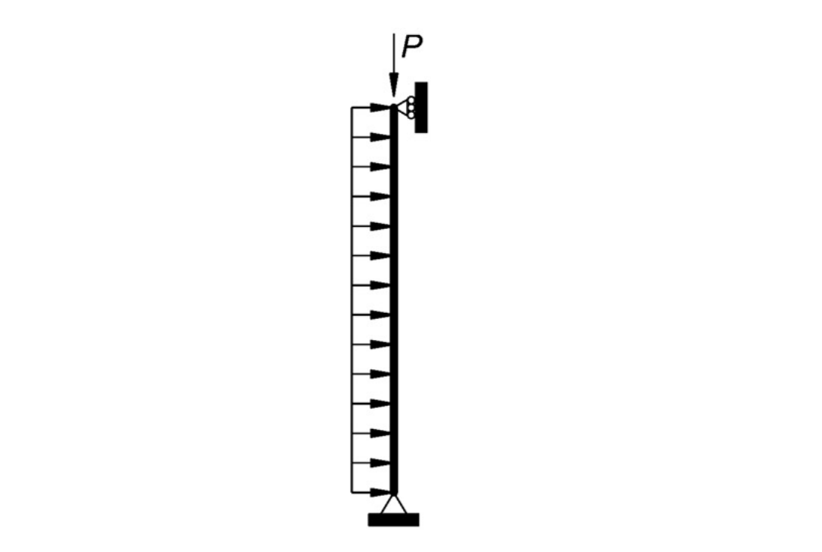Columns with Nonlinear Geometry and Shear
2 min read • 278 wordsThis example investigates P-Delta effects in columns with and without shear.
TODO: Verify

This example implements the benchmarks presented in Chapter C2 of the AISC steel manual commentary. The benchmarks consist of two cases:
- Case 1 involves a simply supported column with a constant uniformly distributed transverse load, and a monotonically increasing axial force. This case only involves effects.
- Case 2 involves a cantilever column with a constant transverse load at the tip and an increasing axial force. This problem involves both and effects.
Section
In both cases the cross section is a W14x48 wide flange shape. Note the approximation of the shear areas and :
d = 13.75*inch
b = 8.030*inch
tw = 0.340*inch
tf = 0.595*inch
transform = "Corotational"
section = dict(
E = 29000.0,
G = 11200.0,
A = 14.1*inch**2,
J = 1.45*inch**4,
Iy = 51.4,
Iz = 484.0,
Ay = d*tw,
Az = b*tf*2,
Cw = 2240*inch**6
)Case 1
In Case 1, a uniformly distributed load of kip/ft is first applied to the elements:
model.pattern("Plain", 1, "Linear")
for i in range(ne):
model.eleLoad("-ele", i+1, "-pattern", 1, "-type", "beamUniform", ( 0.2*kip/ft, 0.0))To check Case 1 we use the eleResponse method:
def check_case1(model, Mbench, Dbench, ndm):
ne = len(model.getEleTags())
Axial = model.getTime()
Mmid = (-1)**ndm*model.eleResponse(int(ne//2), "forces")[5 if ndm==2 else 11]
u = model.nodeDisp(int(ne//2)+1, 2)
# Axial Force | Moment at h/2 | Displacement at h/2 |
print(f"| {Axial:8.0f} |", end="")
print(f" {Mmid:8.1f} | {Mbench:8.0f} | %8.2f %% |" % (100*(Mbench-Mmid)/Mbench), end="")
print(f" {u:8.4f} | {Dbench:8.3f} | %8.2f %% |" % ((100*(Dbench-u)/Dbench)))Case 2
The source code for this example is adapted from https://github.com/denavit/OpenSees-Examples